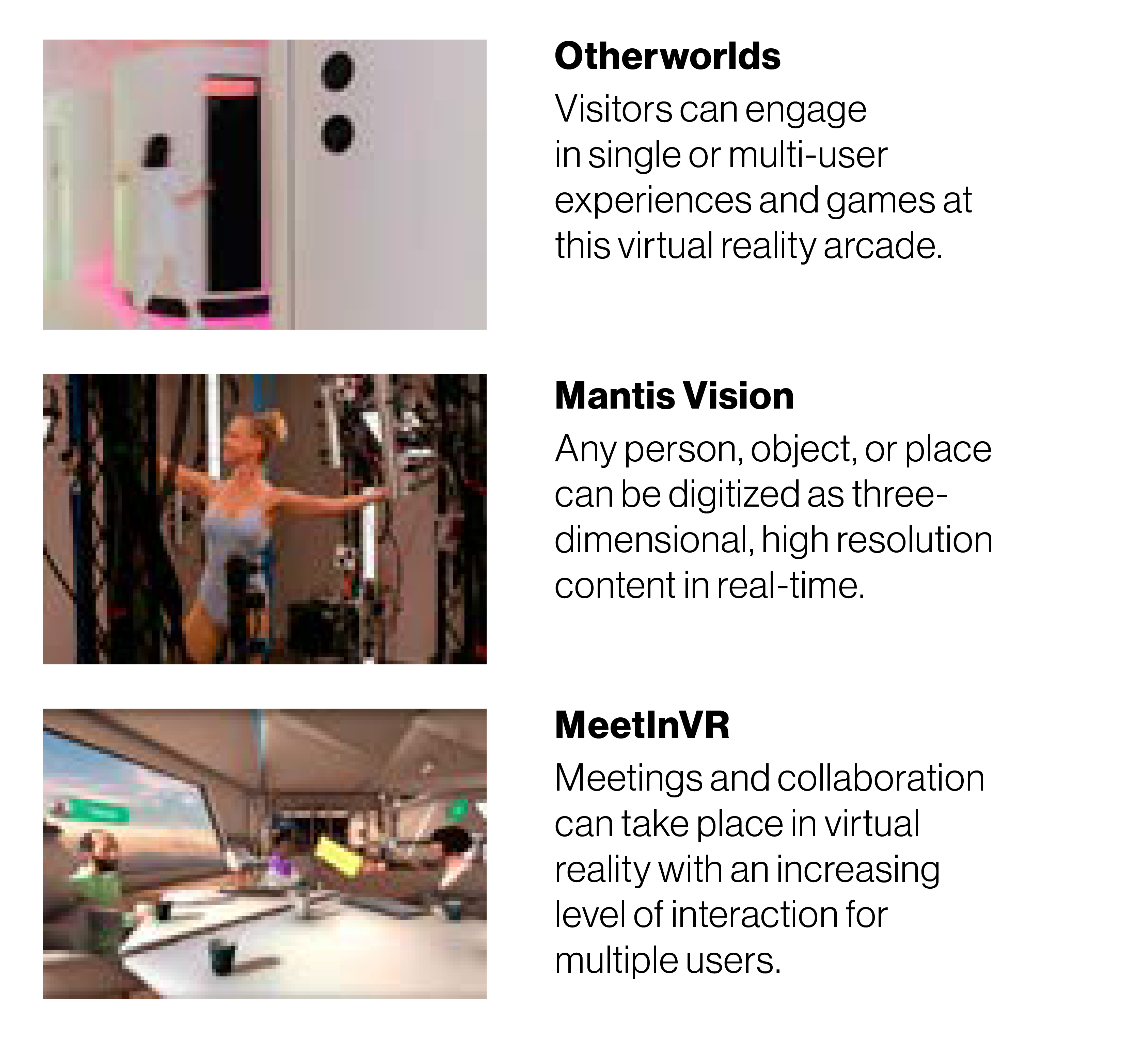5G and the Future of Work
Challenge
Now in its fifth generation, 5G brings unprecedented speed, reliability, and responsiveness. As 5G wireless technology is brought to mainstream markets, how will it impact the way we work?
Outcome
By drawing upon trends in tangential industries, this research outlines five emerging trends for the future workplace allowing people to have more automated, customized, agile, collaborative, and immersive work experiences. This whitepaper positioned the tech company as a thought-leader in both corporate real estate and technology.
Complete whitepaper can be requested; please contact June
Now in its fifth generation, 5G brings unprecedented speed, reliability, and responsiveness. As 5G wireless technology is brought to mainstream markets, how will it impact the way we work?
Outcome
By drawing upon trends in tangential industries, this research outlines five emerging trends for the future workplace allowing people to have more automated, customized, agile, collaborative, and immersive work experiences. This whitepaper positioned the tech company as a thought-leader in both corporate real estate and technology.
Complete whitepaper can be requested; please contact June
Client
Telecom Company
Methods
-Visioning Session
-Trends Research
-Technology Research
-Expert Interviews
Telecom Company
Methods
-Visioning Session
-Trends Research
-Technology Research
-Expert Interviews
Company
Gensler
Role
- Creative Director
- Research Lead
- Graphic Design Lead
- Copywriting and Editing
Gensler
Role
- Creative Director
- Research Lead
- Graphic Design Lead
- Copywriting and Editing
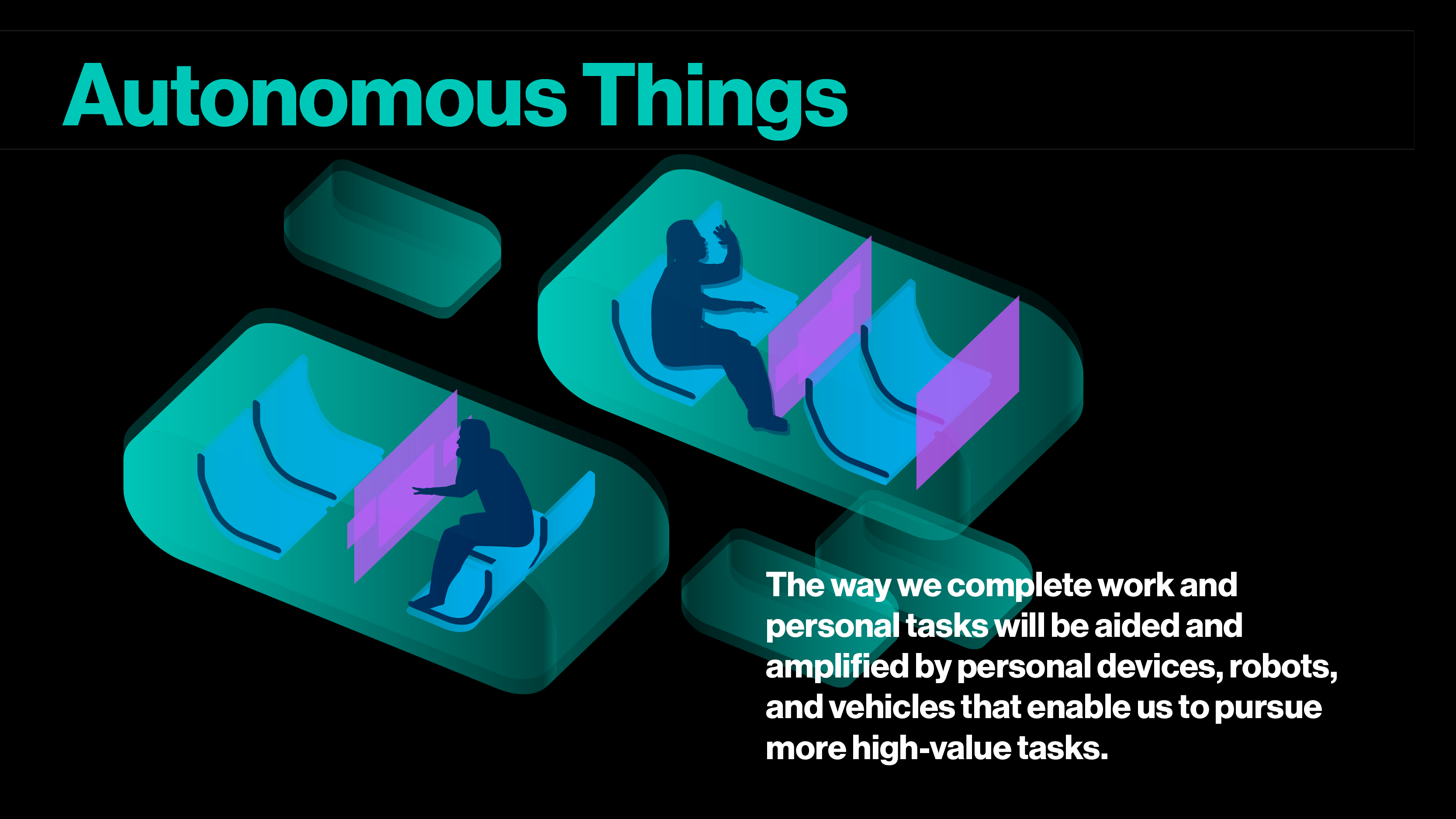

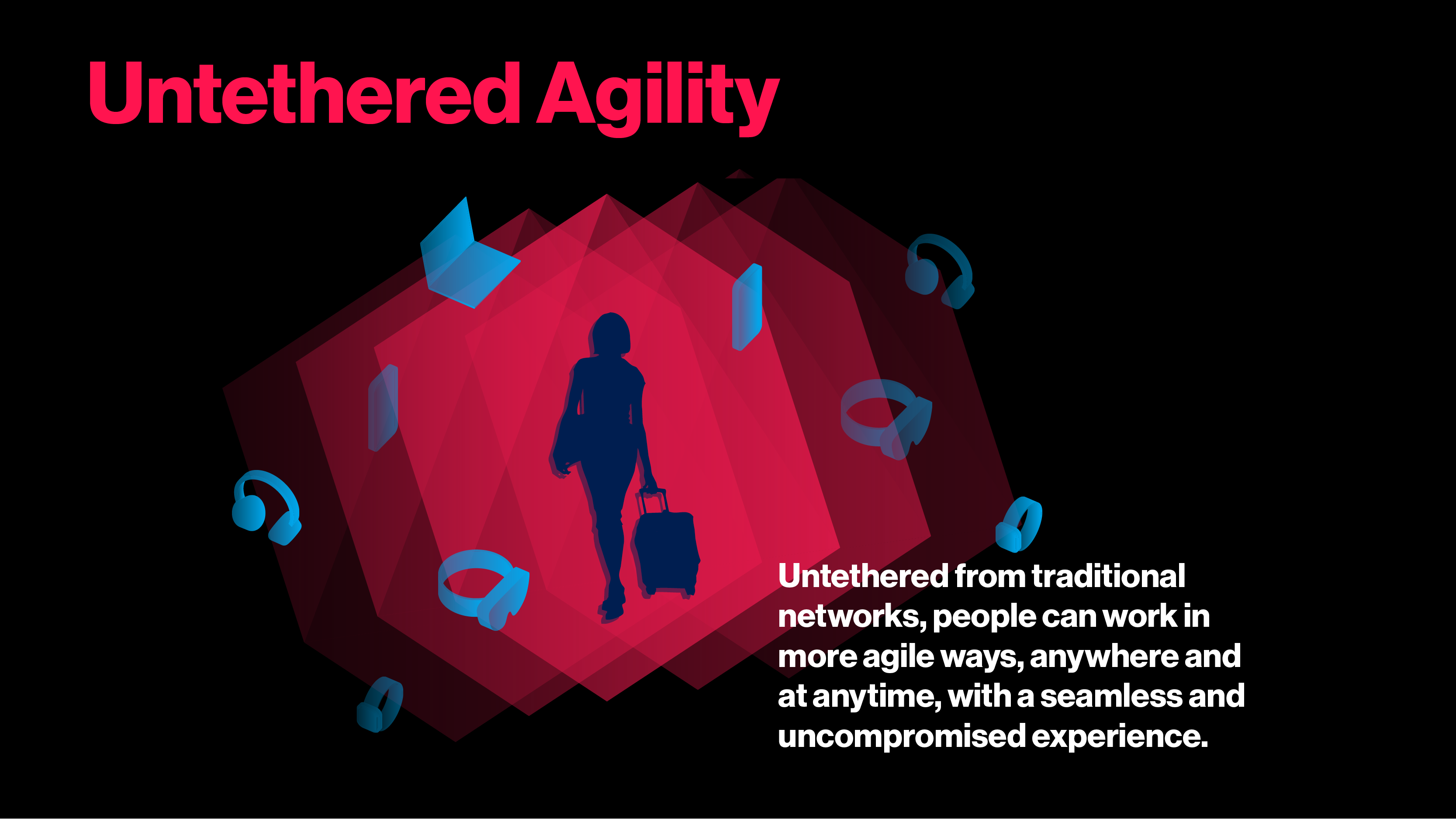


Introduction
The world is becoming increasingly connected with advancements in wireless technology. Now in its fifth generation, 5G brings unprecedented speed, reliability, and responsiveness. As 5G wireless technology is further developed and brought to mainstream markets, it will catalyze a paradigm shift for how we connect with our devices, information, and one another.
Verizon partnered with Gensler to explore how 5G will transform the way people work. We started by evaluating the critical capabilities and limitations of 5G. An analysis of 5G disruptions in tangential industries yielded five key emerging trends. Finally, by applying these trends to the workplace, we distilled specific implications that are most likely to shape the future of work.
Verizon partnered with Gensler to explore how 5G will transform the way people work. We started by evaluating the critical capabilities and limitations of 5G. An analysis of 5G disruptions in tangential industries yielded five key emerging trends. Finally, by applying these trends to the workplace, we distilled specific implications that are most likely to shape the future of work.
What are the capabilities and limitations of 5G?
5G promises improved communication across new mediums of wireless networks. The ability to transfer massive volumes of data with low latency will enable the connectivity required by the Internet of the Things (IoT), Augmented Reality (AR) and Virtual Reality (VR) experiences, and Artificial Intelligence (AI). What may be high-tech experiences now will become much more commonplace.
5G involves significant investments to start up. It requires denser small cell deployment and a strong fibre infrastructure to meet performance goals. If deployed at higher wave frequencies, 5G requires careful planning for indoor applications. Device compatibility is another challenge. The success of 5G implementation hinges on the ability to create an ecosystem of networks and devices.

How is 5G disrupting tangential industries?
5G capabilities will drive disruptions across many industries. With advancements in network speed and latency, transportation is more autonomous, supply chains are more agile, and retail is more personalized— to just name a few examples. 5G connectivity will make business management and operations more efficient, accurate, and responsive, saving resources and cutting costs while delivering better results. By taking a panoramic view of 5G applications across a diverse cross-section of industries, we can distill the shared trends that will then drive transformations in the future workplace.

How will 5G transform the workplace experience?
5G's key disruptions on other industries will impact the future of the workplace in terms of automation, customization, agility, collaboration, and immersive work experiences.
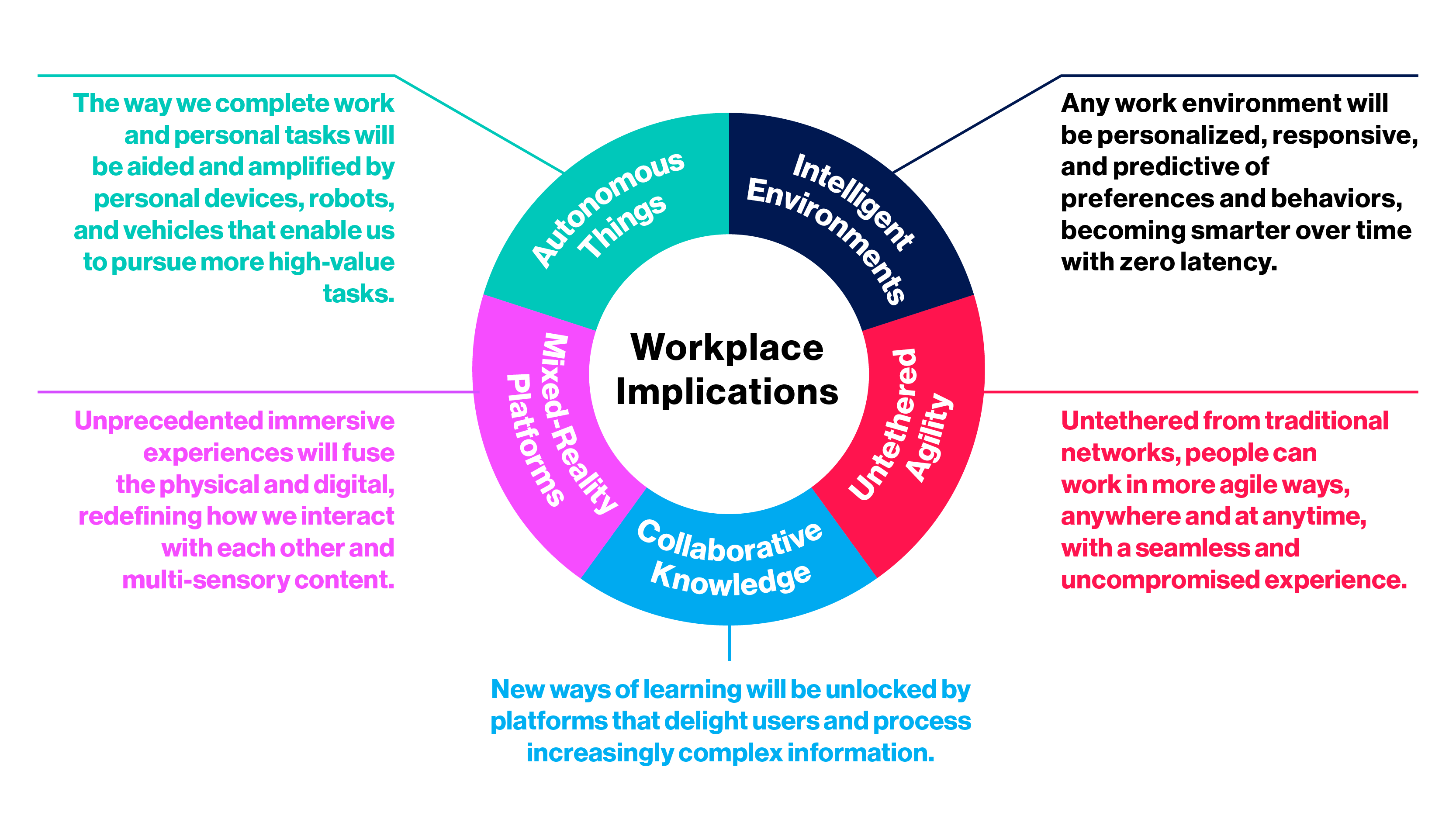
Autonomous
Things
From autonomous vehicles to dry cleaning robots, autonomous devices will support mundane daily tasks and capture lost hours on the road, giving more productive time back to people. Improved networks give users the confidence to take conference calls and enjoy infotainment with reliable high-speed connectivity. Autonomous vehicles can become mobile office environments enhanced by immersive AR/VR experiences. Location accuracy makes robots more reliable in urban and interior environments, lending a helping hand to employees anywhere, anytime.
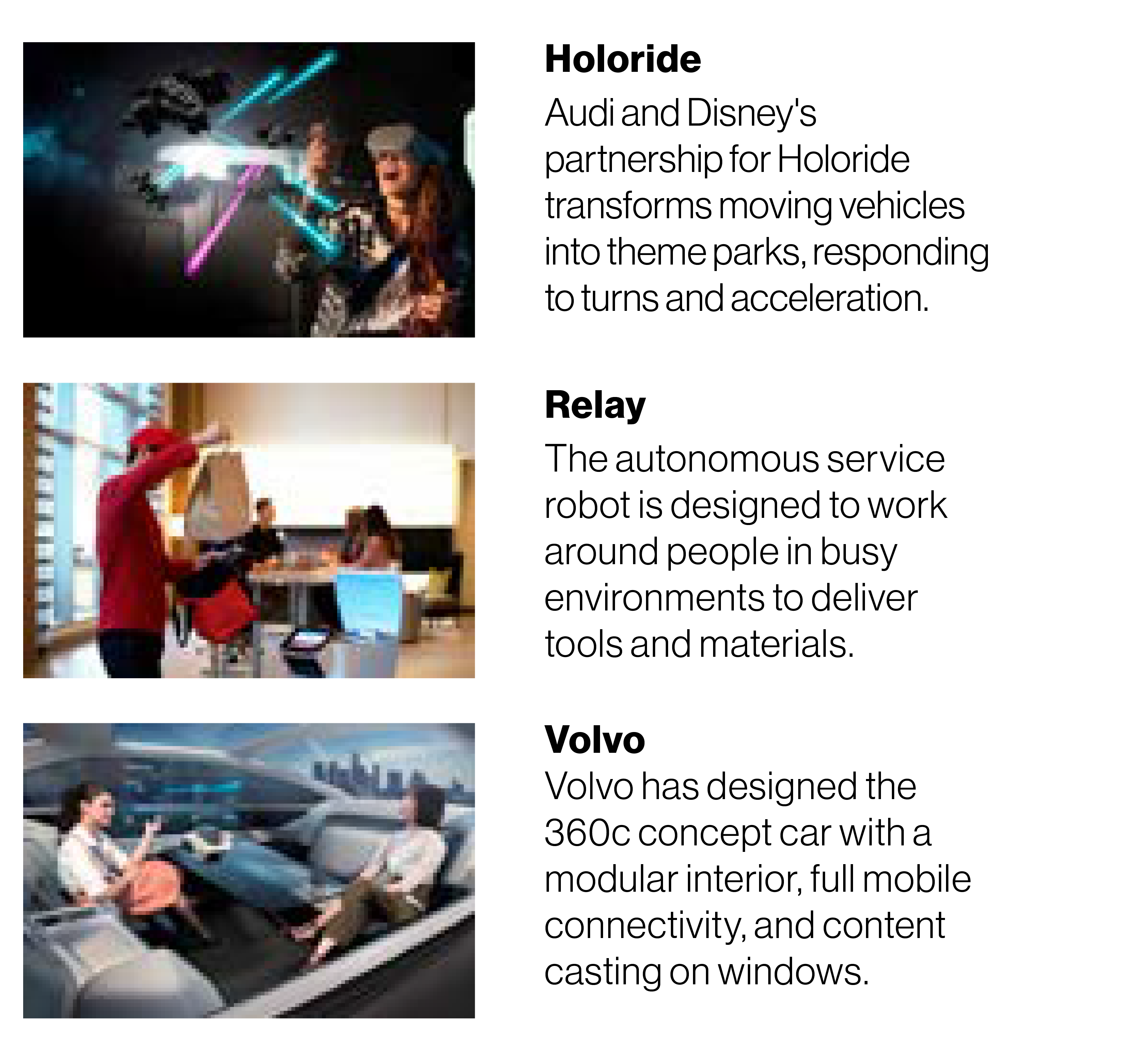
Intelligent
Environments
Environments
Voice assistants in homes and checkout-free groceries are examples that real-time predictive analytics will change the way we interact with physical spaces. 5G will be foundational for helping IoT in buildings realize its full potential. Anything in the environment can become "smart" and facilitate hyper-responsiveness, from immediate screen sharing to furniture layout recommendations. As sensing technology, such as computer vision proliferates, 5G paired with edge processing makes it easier to anonymize data instantaneously, alleviating personal privacy concerns. Additionally, calendar optimization taking into consideration work styles, chronotypes, and room availability can enhance employee productivity, satisfaction, and performance in the workplace.

Untethered
Agility
Agility
The future appears wireless as agile manufacturing and wearables take center stage. Improved wireless network access means that work activities no longer need to take place in specific spaces. The fiber-like performance of 5G unwires network access, making mobile and flexible working the norm. Devices, especially wearables, can do more with 5G because they will require less native compute power and can leverage intelligence in the cloud and edge. Additionally, with consistent coverage, users will no longer experience broken networks when transitioning from Wi-Fi to cellular.

Collaborative
Knowedge
Knowedge
Immersive events, real-time translations, and design collaboration in virtual space are examples that 5G's capabilities will change the way we learn, recall, and share information with one another. AR, VR, 360 video recording, and high fidelity 3D rendering capabilities contextualize and spatialize information, giving employees a much more immersed way of understanding content. Additionally, 5G's improved speed and latency allows massive amounts of data to be geographically tagged, so people can have more reliable location references.

Mixed-Reality
Platforms
Platforms
5G will make the user experience of cross-reality technologies more seamless, consistent, and scalable. Virtual meetings, 3D collaboration, and digital pin-ups in AR and VR will have real-time responsiveness and multi-user capabilities enabled by low latency and increased speeds. As the network takes the pressure off the compute power of devices, the hardware will become cheaper, more compact, and more accessible to users, soon becoming standard IT equipment for employees, just like mobile phones today. Concurrent hardware developments in virtual glasses, headsets, and VR booths offer users increasingly immersive and hands-free experiences.
